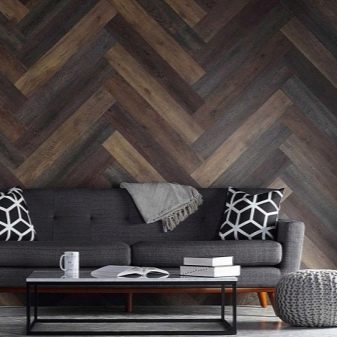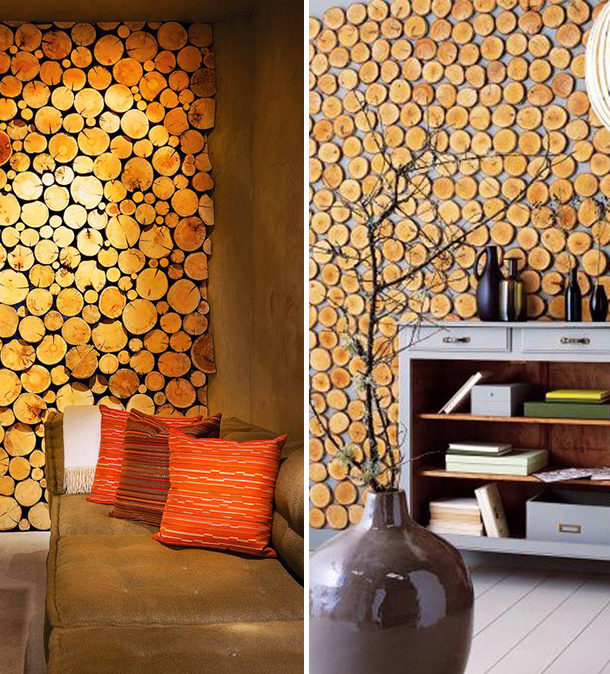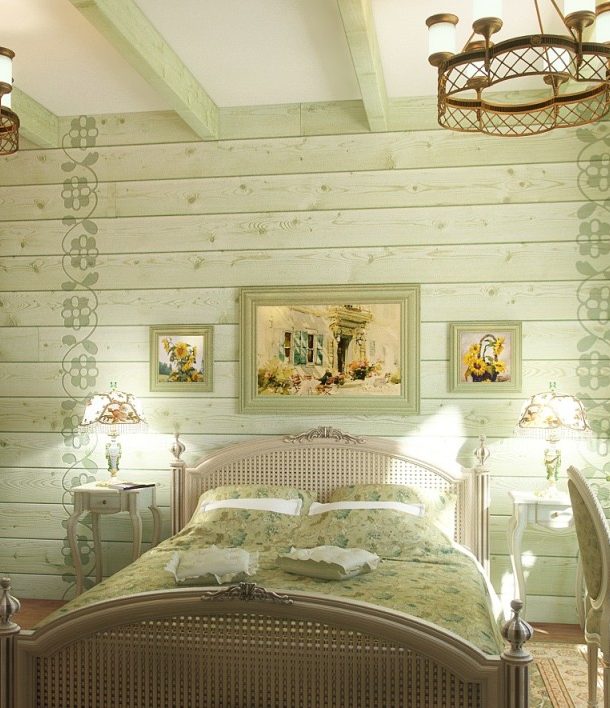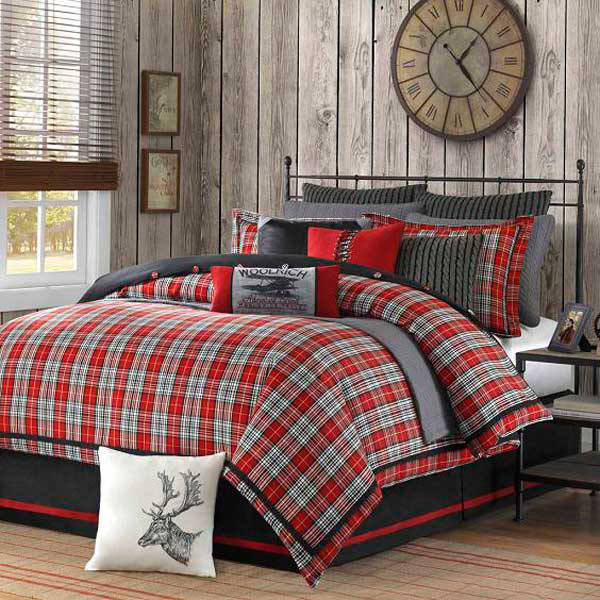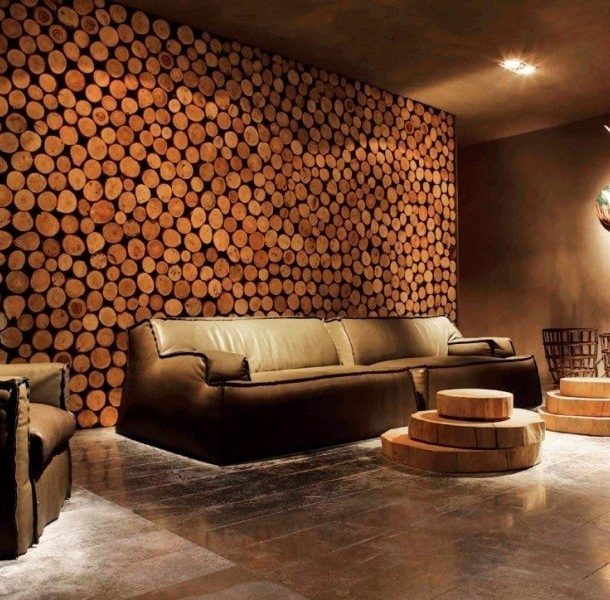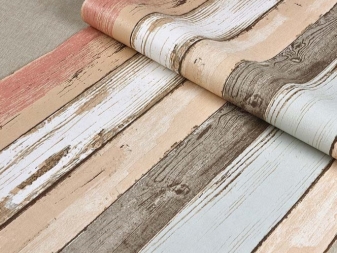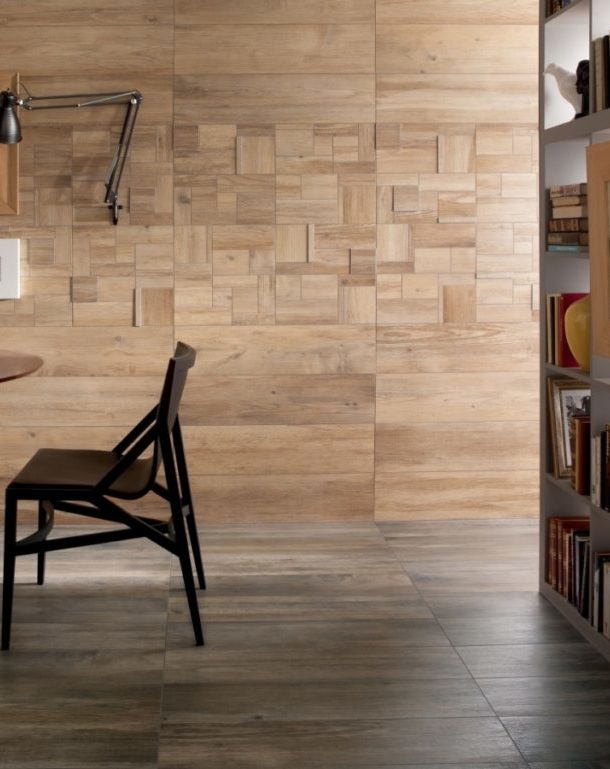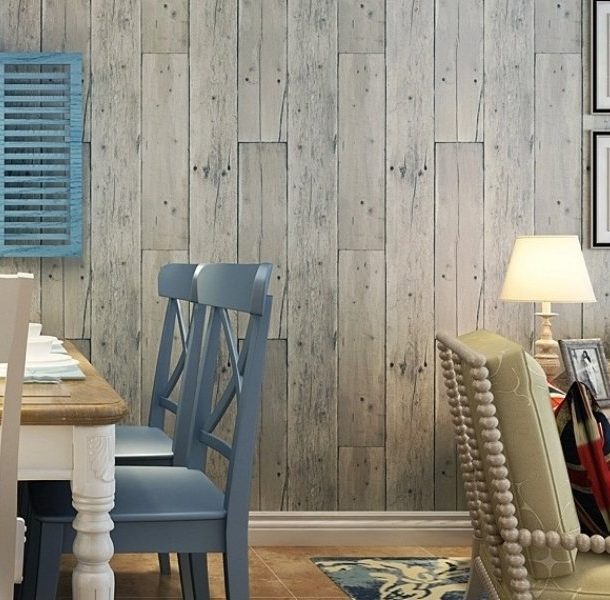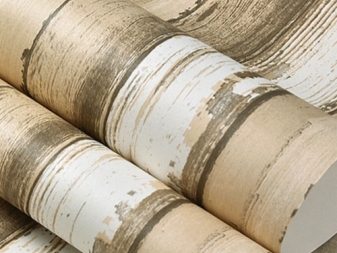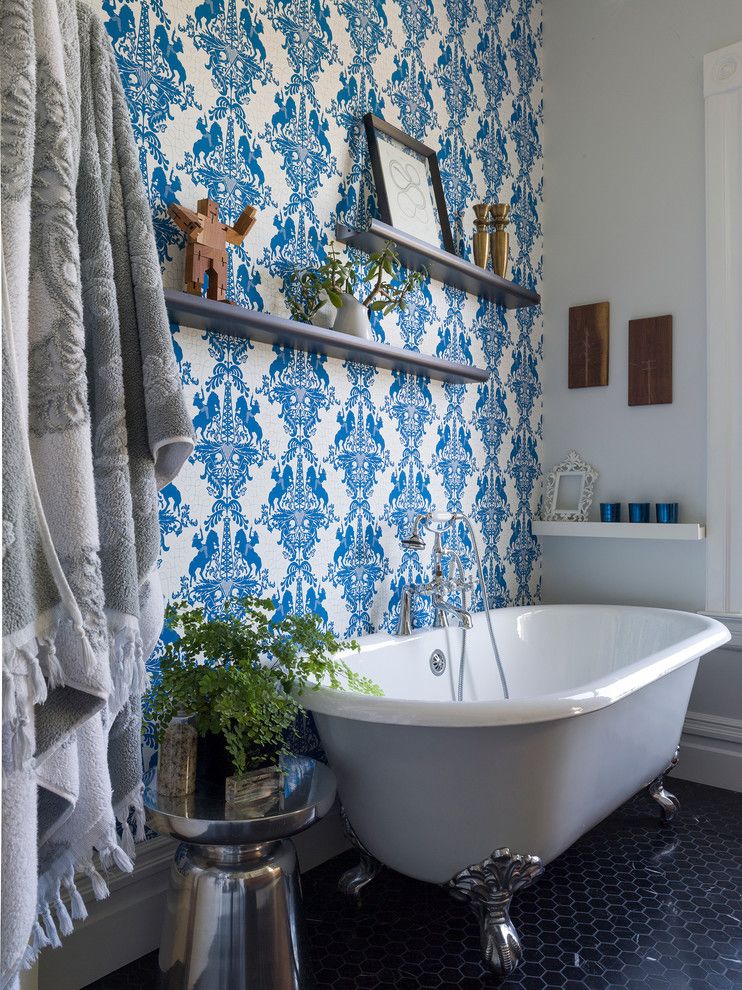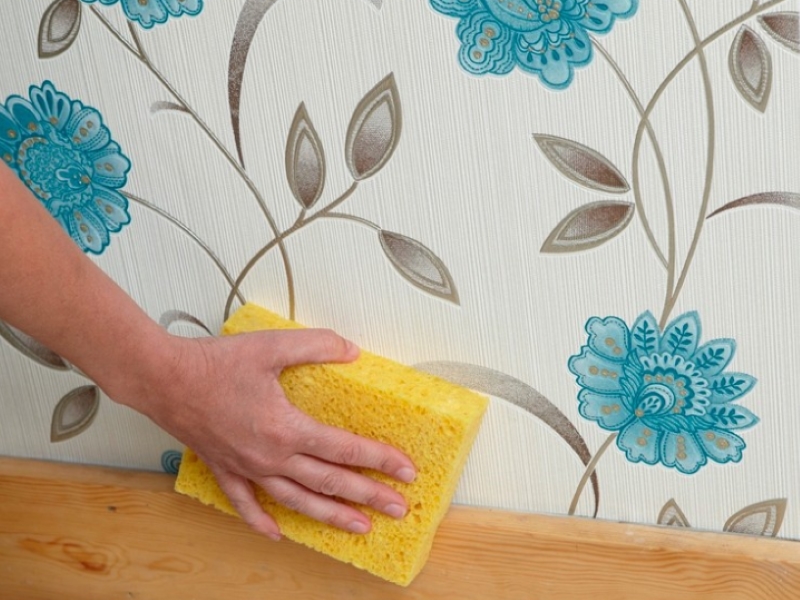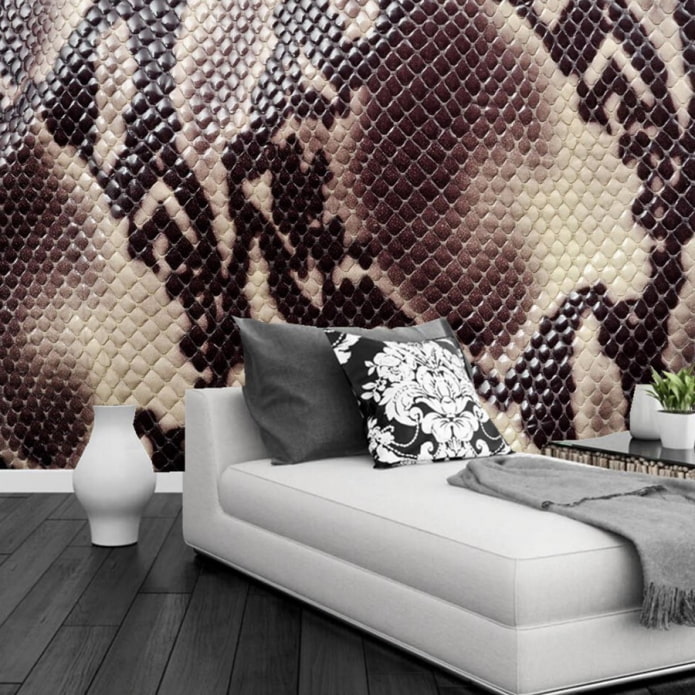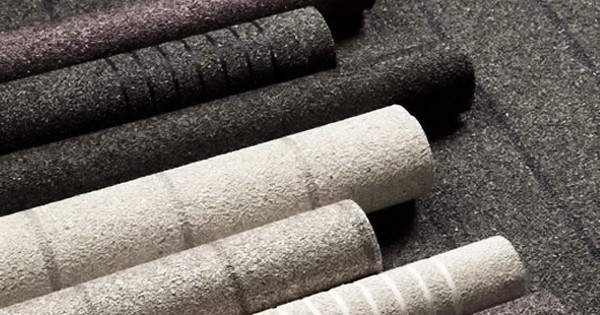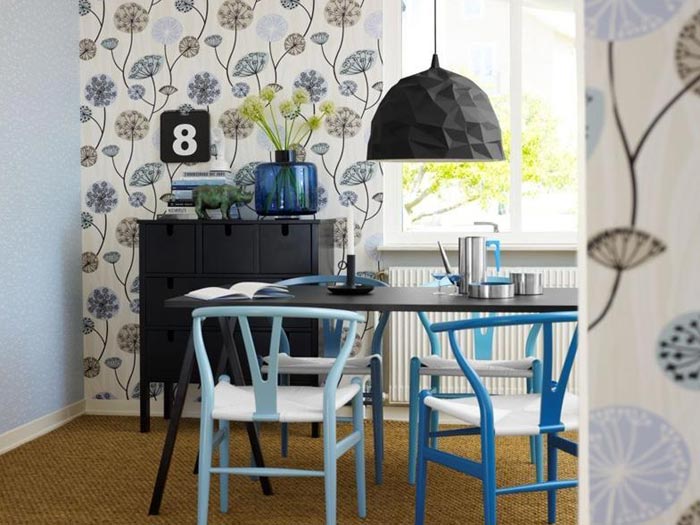Woodgrain wallpaper in the interior: 4 tips for use
Woodgrain wallpaper is a great alternative to natural, expensive finishes. With their help, you can create a cozy and harmonious interior in a classic, rustic, ethnic or new eco style without any special expenses. By the way, these areas are very popular today. From the article you will find out what types of “wooden wallpapers” exist, what are their advantages and disadvantages, and you will also find some tips for use.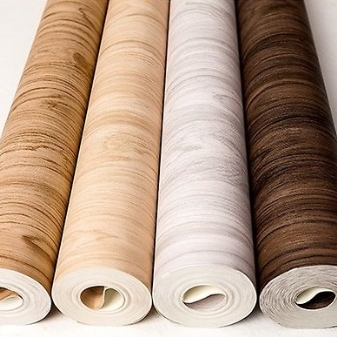
Advantages and disadvantages
If earlier, wallpapers imitating brickwork or wooden boards were thin, absolutely smooth and looked as a whole like an unsuccessful photo, now such wallpapers can hardly be distinguished from the original surface. 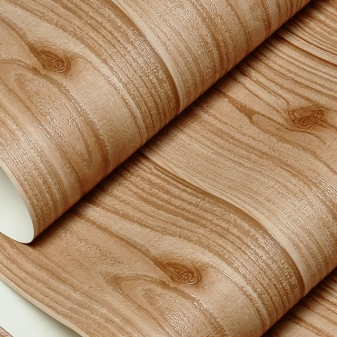 The technique of manufacturing paintings allows you to create volumetric, textured, rough surfaces and convey the smallest cracks. That is why such wallpapers are now widely used by many famous designers. However, this is not their only advantage. In many ways, this finish even superior to natural:
The technique of manufacturing paintings allows you to create volumetric, textured, rough surfaces and convey the smallest cracks. That is why such wallpapers are now widely used by many famous designers. However, this is not their only advantage. In many ways, this finish even superior to natural:
- Stick wallpaper much easier than installing, for example, wall panels made of wood;
- Wallpaper care is simpler;
- Installation time is significantly reduced;

- There is no likelihood of an allergy to the material, as sometimes happens when using natural bamboo;
- Natural wood does not like moisture, which means that it is undesirable to use it for finishing “wet” rooms. But the wallpaper is quite possible;
- Also, the tree does not like the effects of ultraviolet radiation and requires constant updating protective coating. Most wallpapers have a high level of light fastness;

- Some wood species are very rare and expensive, it is unlikely that they will be able to decorate them with an interior. Wallpaper offers a wide selection of textures and colors;
- Wallpaper decoration does not conceal a useful area;
- And, in the end, the cost of such finishes is an order of magnitude lower than natural.

TO disadvantages except for some difficulty in the selection.
Types of wallpaper by material
All wallpapers that mimic a wooden texture may have basis of two materials:
- Paper - the most versatile material in terms of ease of application of a decorative layer on top.
 Vinyl or textiles, as well as another layer of paper, fit well on top of the paper. Material top layer will be responsible for sustainability wallpaper to moisture and other factors. For example, two-layer paper canvases not suitable for rooms such as a kitchen, hallway or bath. They will quickly lose their appearance. They better paste over dry rooms. For wet rooms, the top layer should be made of vinyl. Then you can easily remove dirt from the surface with a damp sponge. Advantage paper base is more affordable cost of finished products, good breathability. TO disadvantages include the inability to use in rooms of all types and the difficulty of gluing;
Vinyl or textiles, as well as another layer of paper, fit well on top of the paper. Material top layer will be responsible for sustainability wallpaper to moisture and other factors. For example, two-layer paper canvases not suitable for rooms such as a kitchen, hallway or bath. They will quickly lose their appearance. They better paste over dry rooms. For wet rooms, the top layer should be made of vinyl. Then you can easily remove dirt from the surface with a damp sponge. Advantage paper base is more affordable cost of finished products, good breathability. TO disadvantages include the inability to use in rooms of all types and the difficulty of gluing;
- Non-woven - non-woven material made from cellulose fibers. Such a base is stable in size and shape. The non-woven decorative layer is most often made from vinyl, sometimes from textile. It can also be glued to such a base natural veneer or bung. Wallpaper non-woven much easier to glue there is no need to apply glue to the canvas, they can hide small irregularities in the walls. TO disadvantages include higher cost.
Colors and decors
The range of wallpaper under the tree is very wide. 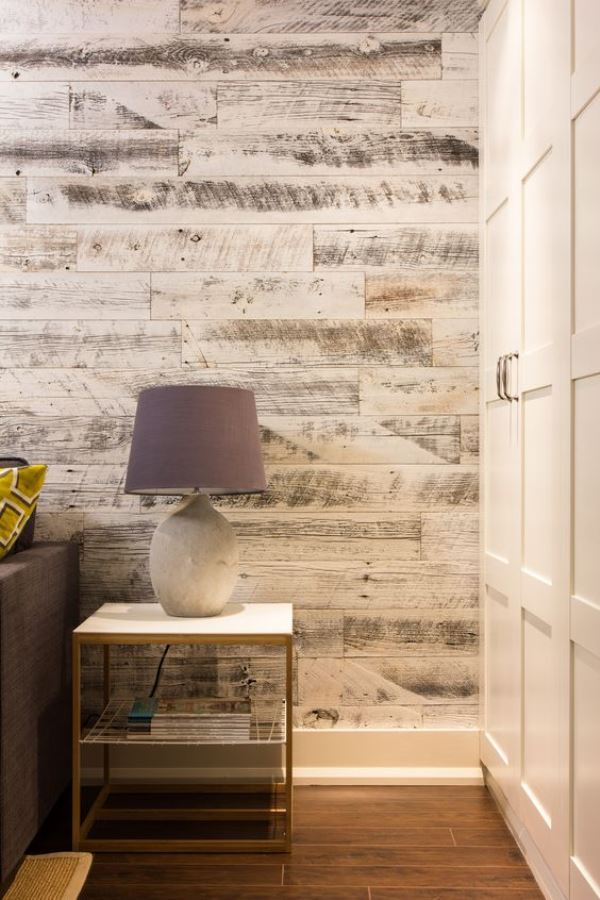 All variety of patterns can be divided into groups:
All variety of patterns can be divided into groups:
- Solid wood texture or imitation wood bark;
- Horizontally or vertically stacked wooden boards;
- Aged boards;
- Panel from wooden saw cuts;

- Imitation of log walls;
- Mosaic of wooden elements;
- Wallpaper under the tree with additional patterns.

Each style is interesting in its own way. The choice should be based on the functional purpose of the room and the general style of its design. It is also worth considering the direction of the picture.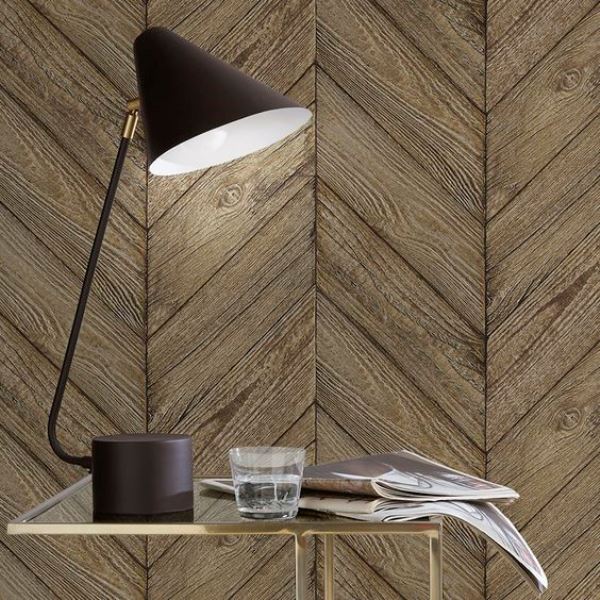
Remember that vertical stripes visually raise the ceiling. Horizontal - expand the space. The diagonal direction is able to erase the boundaries and is perfect for small rooms.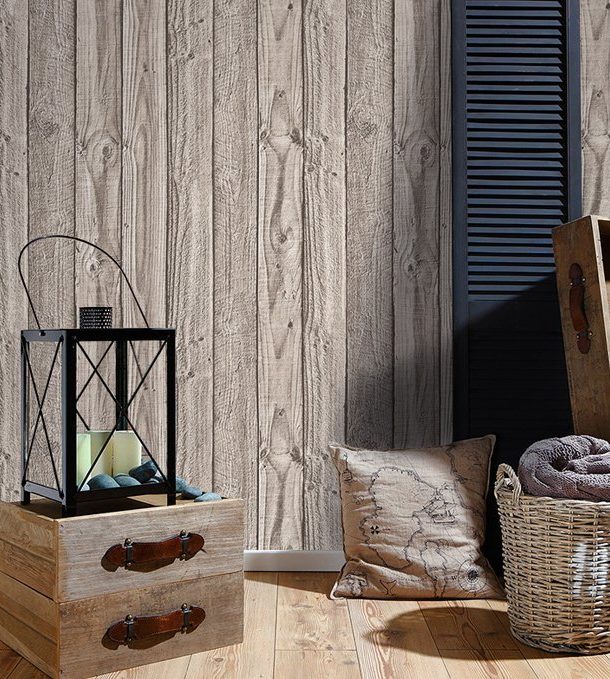
Color spectrum coatings can also be very different. As often as natural shades, there are colored canvases. Imitation of painted wood perfectly complements styles of provence and Scandinavian. And if in the latter case shades of white are preferred, then Provence allows the use of pale shades of yellow, pink, green, blue, lavender.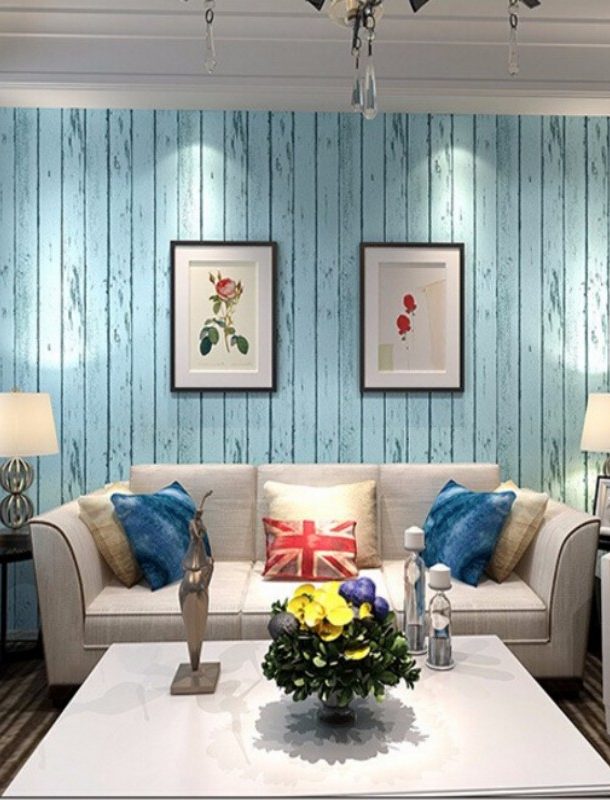
Interior Application
Wallpaper under a tree is a universal finishing material and looks great in the interiors of any premises and any styles.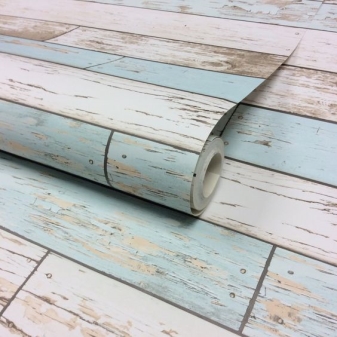
- IN bedrooms wood finishes are most often used to highlight headboard. This decoration looks expressive, plus, adds to the room a feeling of home warmth and coziness. Canvases of natural, light wood shades or white shades are preferred. Against the background of a wooden insert, natural wood furniture looks great. If the wallpaper is selected in white, then the furniture may have a contrasting shade;

- IN living room Such wallpaper often distinguishes a TV zone or a wall behind a sofa. A popular story is a panel of wooden saw cuts. Wood finishes will go well with by the fireplace from wood, if any. Also, wood texture is well suited to such floor coverings as laminate or parquet board and some types of carpet. The most advantageous against such a background will look like furniture in classic style or simple form;

- Do not forget that with such wallpaper you can to paste over not only walls but also ceiling plane. But only on condition that the ceiling height is more than 2.7 meters, otherwise an oppressive sensation will be created;

- IN hallway Light wallpapers with a plot in the form of raw, vertically arranged boards, aged boards or imitation wood bark will look good. You can not paste over the entire wall, but only its lower part around the entire perimeter of the room. Then the bottom should be made dark, and the top should be brighter. In addition, this separation will help to visually increase the height of the ceiling;

- IN the kitchen Wallpaper under the tree harmoniously look in the dining area. But if fronts of a kitchen set they also imitate wood or are made of it; it is better not to cover the entire wall with such wallpapers. Make the decorative insert not too wide. Let it match the length dining table;

- Instead of plain wallpaper or plastic trim, a bathroom You can also use a similar print. If you want to paste over all the walls, choose light shades. Try using wallpaper with a diagonal pattern and be surprised at the unusual effect;

- IN children’s rooms Such wallpapers can be used to decorate a single wall or as a decorative insert. They will bring comfort to the room, but will not overload it or seem too boring to the small owner. Moreover, wallpaper under a tree is perfectly combined with many other types of wallpaper and materials.

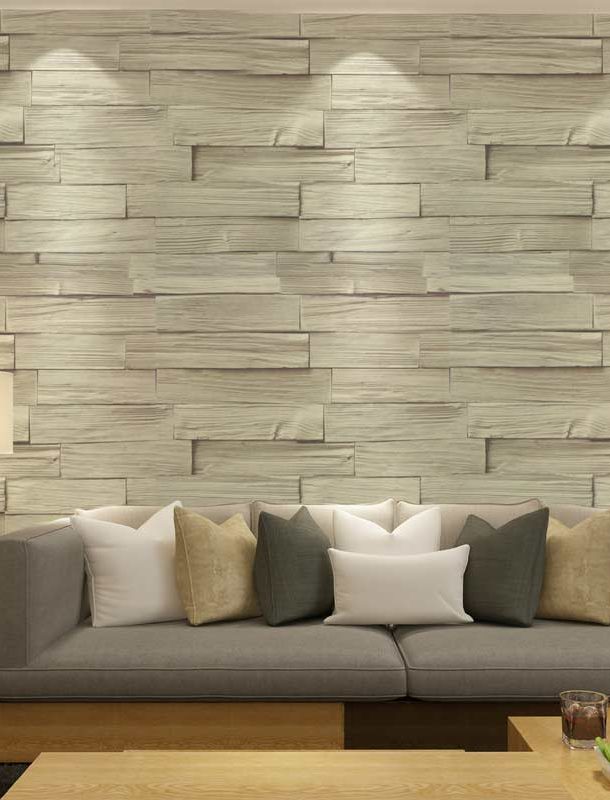
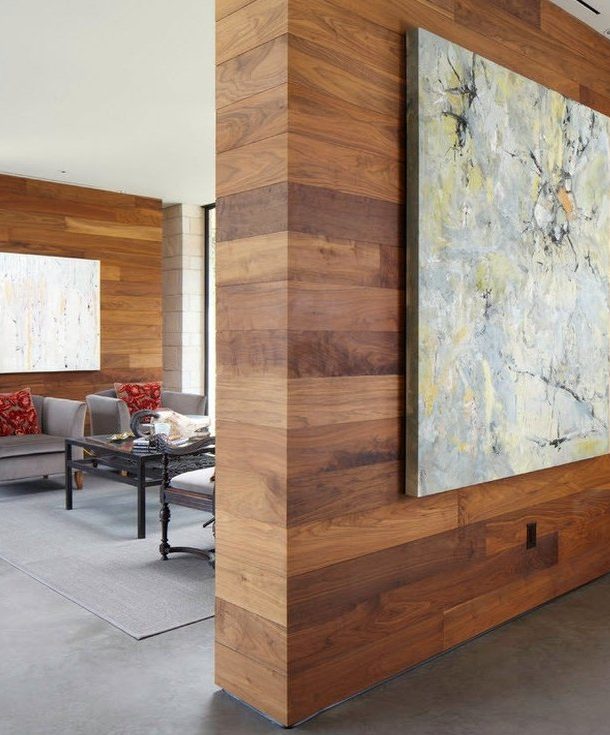
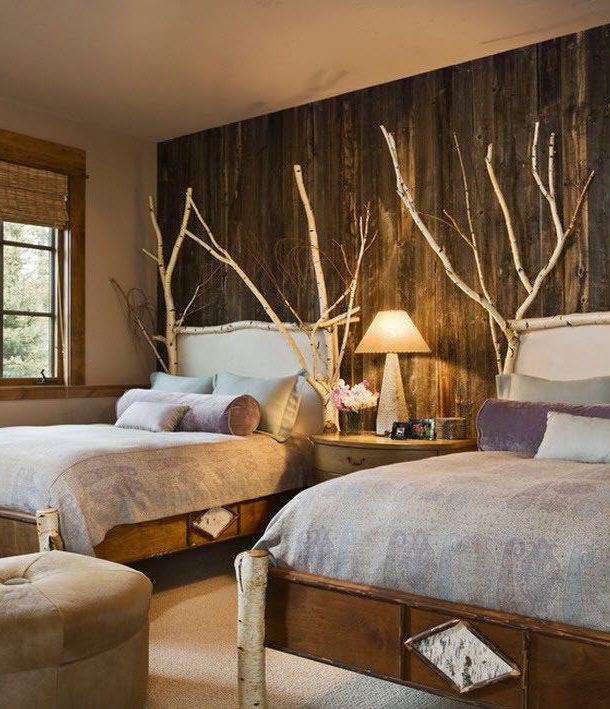
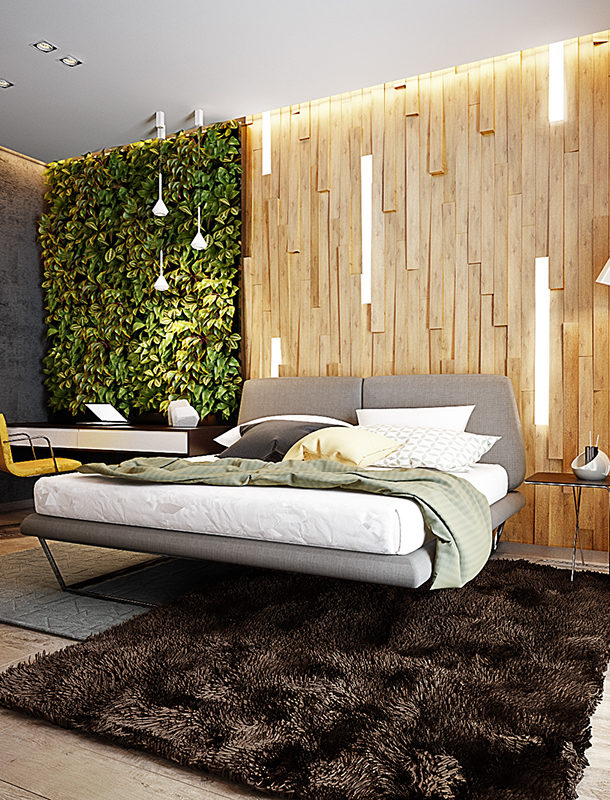 Vinyl or textiles, as well as another layer of paper, fit well on top of the paper. Material top layer will be responsible for sustainability wallpaper to moisture and other factors. For example, two-layer
Vinyl or textiles, as well as another layer of paper, fit well on top of the paper. Material top layer will be responsible for sustainability wallpaper to moisture and other factors. For example, two-layer 